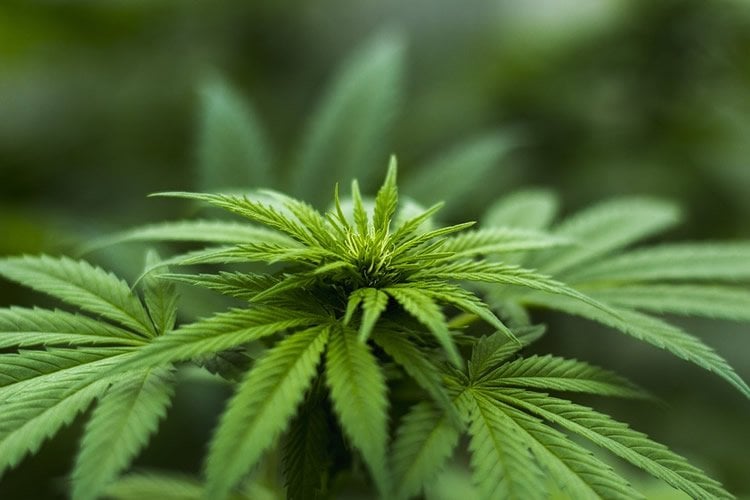Summary: Researchers reveal a link between adolescent cannabis use and an increased risk of bipolar symptoms, including hypomania.
Source: University of Warwick.
Cannabis use in youth is linked to bipolar symptoms in young adults, finds new research by the University of Warwick.
Researchers from Warwick Medical School found that adolescent cannabis use is an independent risk factor for future hypomania – periods of elated mood, over-active and excited behaviour, and reduced need for sleep that are often experienced as part of bipolar disorder, and have a significant impact on day-to-day life.
Led by Dr Steven Marwaha, a clinical academic Psychiatrist, the research analysed data from the Avon Longitudinal Study of Parents and Children and found that teenage cannabis use at least 2–3 times weekly is directly associated with suffering from symptoms of hypomania in later years.
There was a dose response relationship such that any use still increased the risk but less powerfully.
The Warwick research is the first to test the prospective association between adolescent cannabis use and hypomania in early adulthood, whilst controlling for important other factors that might explain this connection (e.g psychotic symptoms).
Cannabis use was also found to mediate the association of both childhood sexual abuse and hypomania, and male gender and hypomania.
The findings suggest frequent adolescent cannabis use is likely to be a suitable target for interventions that may allay the risk of young people developing bipolar disorder.
Commenting on the research, Dr Marwaha said:
“Cannabis use in young people is common and associated with psychiatric disorders. However, the prospective link between cannabis use and bipolar disorder symptoms has rarely been investigated.

“Adolescent cannabis use may be an independent risk factor for future hypomania, and the nature of the association suggests a potential causal link. As such it might be a useful target for indicated prevention of hypomania.”
Cannabis is one of the most commonly used illegal substances of abuse in western countries. Problematic use in the general population is as high as 9.5% in the United States, while 2.6% of the UK population report having been cannabis dependent in the last year.
Source: Matthew Grant – University of Warwick
Publisher: Organized by NeuroscienceNews.com.
Image Source: NeuroscienceNews.com image is in the public domain.
Original Research: Full open access research for “Cannabis Use and Hypomania in Young People: A Prospective Analysis ” by Steven Marwaha, Catherine Winsper, Paul Bebbington, and Daniel Smith in Schizophrenia Bulleting. Published online November 28 2017 doi:10.1093/schbul/sbx158
[cbtabs][cbtab title=”MLA”]University of Warwick “Cannabis Linked to Bipolar Symptoms in Young Adults.” NeuroscienceNews. NeuroscienceNews, 1 December 2017.
<https://neurosciencenews.com/bipolar-cannabis-8085/>.[/cbtab][cbtab title=”APA”]University of Warwick (2017, December 1). Cannabis Linked to Bipolar Symptoms in Young Adults. NeuroscienceNews. Retrieved December 1, 2017 from https://neurosciencenews.com/bipolar-cannabis-8085/[/cbtab][cbtab title=”Chicago”]University of Warwick “Cannabis Linked to Bipolar Symptoms in Young Adults.” https://neurosciencenews.com/bipolar-cannabis-8085/ (accessed December 1, 2017).[/cbtab][/cbtabs]
Abstract
Cannabis Use and Hypomania in Young People: A Prospective Analysis
Background
Cannabis use in young people is common and associated with psychiatric disorders. However, the prospective link between cannabis use and bipolar disorder symptoms has rarely been investigated. The study hypothesis was that adolescent cannabis use is associated with hypomania in early adulthood via several potential etiological pathways.
Methods
Data were used from the Avon Longitudinal Study of Parents and Children, a UK birth cohort study. The prospective link between cannabis use at age 17 and hypomania at age 22–23 years was tested using regression analysis, adjusted for gender, early environmental risk factors, alcohol and drug use, and depression and psychotic symptoms at age 18 years. Path analysis examined direct and indirect effects of the link and whether gender, childhood family adversity, or childhood abuse are associated with hypomania via an increased risk of cannabis use.
Results
Data were available on 3370 participants. Cannabis use at least 2–3 times weekly was associated with later hypomania (OR = 2.21, 95% CI = 1.49–3.28) after adjustment. There was a dose–response relationship (any use vs weekly). Cannabis use mediated the association of both childhood sexual abuse and hypomania, and male gender and hypomania. The cannabis use-hypomania link was not mediated by depression or psychotic symptoms.
Conclusions
Adolescent cannabis use may be an independent risk factor for future hypomania, and the nature of the association suggests a potential causal link. Cannabis use mediates the link between childhood abuse and future hypomania. As such it might be a useful target for indicated prevention of hypomania.
“Cannabis Use and Hypomania in Young People: A Prospective Analysis ” by Steven Marwaha, Catherine Winsper, Paul Bebbington, and Daniel Smith in Schizophrenia Bulleting. Published online November 28 2017 doi:10.1093/schbul/sbx158






